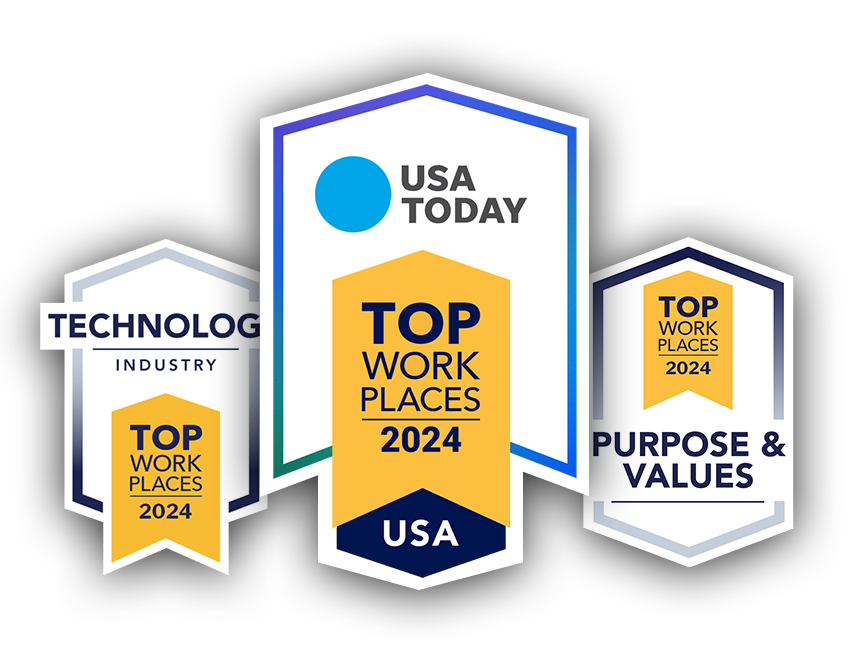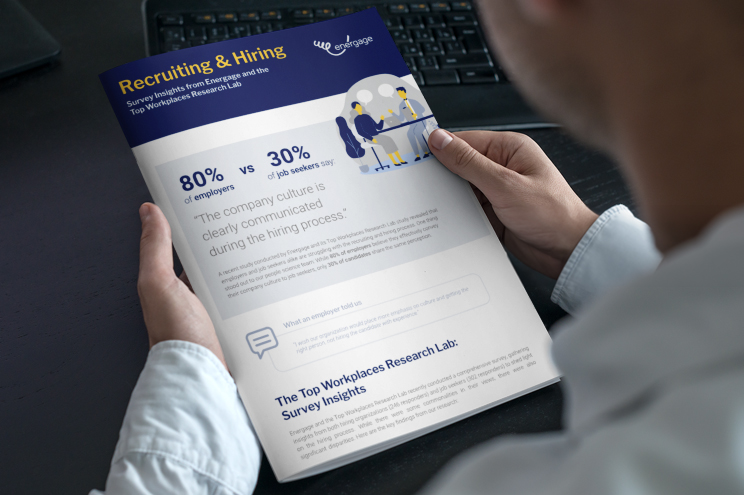What makes some organizations magnets for top talent while others struggle to stand out? According to new research from the Energage People Science Team, the answer isn’t about doing everything. It’s about connecting culture and talent management strategies with consistency and purpose.
In the Talent Management Strategies of Award-Winning Organizations report, we reveal the results of our most recent study that looked at Top Workplaces winners (those already recognized for people-first cultures) and compared them to organizations aspiring to earn that recognition. Both groups showed strong practices, but Top Workplaces have a clear talent management that sets them apart.
Key Talent Management Insights
Our study dug into how organizations are shaping their HR talent strategies, from checking the box on talent management basics to adopting more advanced talent management best practices. The findings reveal where most companies stand today ― and what it takes to move the needle. Here’s what you need to know:
1. Most have mastered talent management basics, but maturity is rare.
Most organizations have adopted core talent management strategies like annual reviews, performance management, and hiring processes. But advanced, data-driven practices such as workforce planning, predictive analytics, and AI remain uncommon.
2. Top Workplaces win by connecting culture to talent management.
They don’t just check boxes. Top Workplaces are deliberate and consistent, embedding culture into their HR talent strategies. They hire for culture fit, invest in employee growth, and identify high performers early. Their practices aren’t complicated, but they’re intentional, consistent, and proven to deliver momentum and measurable results.
3. Higher talent maturity creates stronger outcomes.
Top Workplaces outpace aspiring organizations on the Talent Maturity Index (3.40 vs. 2.92). Each people-focused practice — whether career pathing, recognition programs, or development opportunities — adds up, creating measurable gains in talent strength and organizational outcomes.
4. Company size shapes the talent management path but not the destination.
Large organizations often leverage systems and resources, while smaller companies excel in agility and close manager-employee connections. Regardless of size, intentional talent management strategies help any organization advance.
5. Three talent management practices separate Top Workplaces from the rest.
- Hiring with culture in mind: Culture-fit assessments, structured interviews, and employee testimonials bring credibility and alignment.
- Employee development plans: Structured career conversations, recognition programs, and integrated development platforms unlock growth.
- Workforce planning: Succession planning strategies, career pathing, and leadership models keep the pipeline strong.
Recommended talent management steps
Top Workplaces prove that talent management maturity drives real results. And the best part? Every step forward, no matter how small, moves you closer to building the kind of workplace people don’t just join — they stay and thrive in.
If you’re looking to improve your talent management strategy, the good news is that you don’t have to overhaul everything overnight. Small, intentional moves can make a big difference. Whether you’re a lean HR team in a growing company or part of a large enterprise, here’s a practical roadmap to strengthen your workforce and stay ahead:
Step 1: Assess your talent maturity.
Get a clear view of where you stand with the no-cost Talent Maturity Index. In under 30 minutes, you’ll see your strengths, gaps, and opportunities to move the needle, understand how your strategy stacks up against Top Workplaces, and leave with a clear, actionable plan.
Step 2: Build beyond basic talent management.
If you’ve got reviews and surveys covered, add practices like culture-fit hiring, structured coaching conversations, and recognition programs.
Step 3: Consider the future in your talent management plan.
Don’t wait until a key leader leaves your company to start succession planning. Proactive workforce planning ensures you’re ready for what’s next.
Step 4: Explore emerging talent management tools.
Generative AI for performance feedback and predictive analytics for turnover risk are still early-stage — but forward-thinking HR teams are already experimenting.
Step 5: Participate in Top Workplaces.
Capturing employee feedback through Top Workplaces gives you invaluable insight into what matters most to your people. And if your organization wins, it’s an incredible opportunity to showcase that you’re where the nation’s top talent wants to work.

